BAE Systems has received a $26 million contract to equip the U.S. Navy’s Constellation class frigates with the fully-automatic 57mm Mk 110 naval gun.
The contract, awarded earlier this month, includes engineering support and calls for two Mk 110s for the USS Constellation and USS Congress.
According to BAE in a news release:
“The Mk 110 gun system, known internationally as the Bofors 57 Mk 3, is the deck gun of choice for the Constellation class. It is a multi-mission, medium-calibre shipboard weapon, effective against air, surface, or ground threats without requiring multiple round types. The system is capable of firing up to 220 rounds per minute at an effective range of more than nine nautical miles using BAE Systems’ six-mode programmable, pre-fragmented, and proximity-fused (3P) ammunition.”
It is understood that the contract also includes providing a Mk 110 system to the U.S. Coast Guard’s third Argus Class Offshore Patrol Cutter, USCGC Ingham. Deliveries are expected to begin in 2023.
“The selection of the Mk 110 for the U.S. Navy’s Constellation class frigates signifies confidence in the gun system and its ability to meet current and future needs in shipboard defense,” said Brent Butcher, vice president of the weapon systems product line at BAE Systems
“The Mk 110 gun system provides this next-generation frigate with the continued performance that our surface fleet has come to expect from its intermediate calibre guns.”
BAE add that the 57mm Mk 110 is currently in service on the Navy’s Littoral Combat Ship and the U.S. Coast Guard’s National Security Cutter.
“To date, BAE Systems is providing 39 Mk 110 guns to the Navy and 15 to the Coast Guard. Worldwide, 103 Mk 110/57 Mk 3 naval gun systems are under contract with nine nations.”


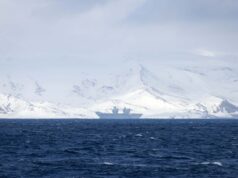
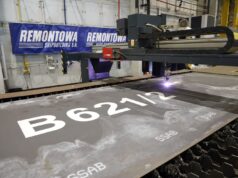
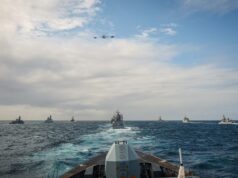

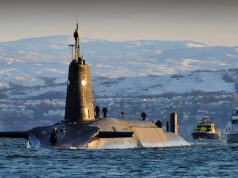
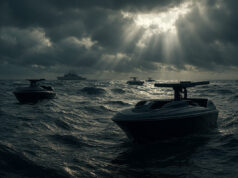
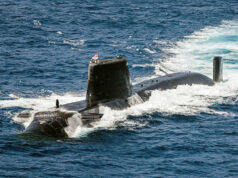

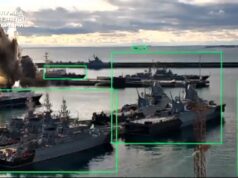
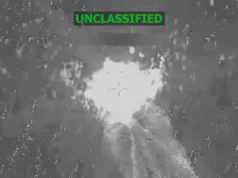

Do you think there will be outrage on US defence sites about this ? Useless for NGS fit only for OPV’s ? Just wondering.
Will be interesting to see if it even gets a mention to be honest…! I don’t think that the US really sees a lot of use for NGS, but that may be because they have an embarrassment of riches when it comes to all the precision munitions they can sling at a target instead
I see it as a vote of confidence in the choice made by the RN for the T31, which is good.
So do I.
Same here. I think a lot of people are too quick to judge the 57mm on it’s calibre, rather than it’s calibre.
Yep no pun intended but somethings are never big enough for some people. It’s not the size of the dog in the fight it’s the size of the fight in the dog.
As a dad, I approve of that statement!
in terms of rapid fire and repositioning a smaller calibre weapon will have physics on it side. Far less mass to move quickly and inertia to slow down.
A 5″ Vulcano round have 100km range.
It is possible the Canadian T26 which will have the Leonardo 127mm gun will get that round.
There has been. Same criticisms we’ve seen for the T31 armament. Just like T31 the Constelllation Class would be the perfect choice for NGFS rather than the more expensive AB’s or T26.
The criticisms are lessened as many are just grateful to have a design that may work after the DDG-1000 and LCS fiasco’s. Plus it actually has a decent missile loadout…
Personally I think its a mistake as its lack of mission bay will bite them in the backside in years to come…
The idea behind them is the same as 31’s but at twice the price. Yes with twice the firepower. Agree about mission bays. Predicting the future is never an exact science but USV’s, UAV’s and the space they’ll need seems like a no brainer. .
Especially given the fact that the US is one of the few nations that can really afford and leverage the unmanned revolution thats coming…everyone else is playing around in comparison.
Wouldn’t be surprised if there was a batch 2 that tried to fix it. But that’s not a good start for a new class !
I don’t think they could, to incorporate a proper mission bay like T26 is a huge challenge affecting the whole structure of the ship. They could perhaps put in some more allowance for USV’s and UUV’s but they’re not going to come close to the T26 standard without a wholesale re-design, and at that point you may as well buy a different, purpose built design.
The type 26 and 31 are looking better and better the more you think about it.
Like the Type 26. If you need the best. Buy the best. Build type 26
T26 didn’t get a look in for the US frigate purchase because of the requirement that the design should be based on one already in service. If the T26 proves to be as good as we all hope it is, it would make an interesting case in the future for the US to make future orders of a vessel already ordered by three of its strongest allies.
As the USN are only building 15 Constellation Class frigates, so it is like only the starter before your Main Course!
So perhaps they may build T26’s when ours are in the water?
The constellation class have not been without controversy, a lot in the US were arguing for them to have 48 vls rather than 32 as otherwise the number of VLS in the fleet will decline as the Ticonderoga class are replaced with Constellation though the tradeoff would have been the hull would have had to be lengthened even more, more redesigns to maintain stability and an estimated $500m more per ship as a result.
True, but they have 16 separate NSM launch cells, plus RAM separate. Those VLS are purely for ESSM, Standard Missiles, and ASROC. That’s an awful lot of area air defence and ASW loadout. The people complaining about the number of VLS are likely LockMart shareholders wanting to up the number of Mk41…
The Constellation class of frigates aren’t seen as a replacement for the Ticonderoga class cruisers, but rather replacements for the failed LCS programme. The USN has yet to decide how to replace the Ticonderogas or what to do for their next destroyer given they have maxed-out the Arleigh-Burke destroyer design.
Constellation Class is certainly not going to replace the Ticonderoga class! It is a class which the USN have missed out on for the past few years after the retirement of Oliver Perry Class.
No, then again the Constellation class will have 16 anti ship missiles, 32 Mk41s, RAM and a towed array. The issue with the T31 class is the complete sensor/weapons fit, where some including myself wonder if it would have been better to fit the 57mm to the T26s and the T31s have the 127mm.
The other issue is cost the T31s are £250million plus MoD fit, which would be weapons etc, that brings them up to about £350 million, the Constellation class will be about £450 million from the second ship. Also the US frigate has the AN/SPY-6, whilst ours has the NS-100. A big diffrence in capability. When I think that the US frigates will be doing the same job as the T26s, the Americans are getting three frigates for the cost of two of ours.
So will it have similar noise suppression for it’s engines ? They seem to see it filling the role left by Perry’s than say the Spruance’s.
No.
They have changed the prop to fixed pitch.
I dont even think it will get the old school praire masker!
But they’re still putting a tail on it ! Left hand right hand.
T31 may get a tail deployed from a remote workboat …the RN is going big on the remote boat operations thing and not just for MCMV. They are trialling a tail equipped workboat shortly
With tails on say work boats you then have the ability to sprint drift and locate the target really quickly…far quicker than doing it as a singleton frigate with your own tail.
Everyone is saying Wildcat with dipping sonar and forgetting that the RN Transformation plans have embraced remote sensors on remote platforms.
Hope your right. ?’s Is cost an issue with tails ? If it is could we use a lower power version with more than 1 would more than 1 even if lower power actually work better at getting a fix on a sub ?
Careful, Ron5 will pop up and tell us that we don’t understand what small remote boats can do!
Personally I do thing and electrically powered remote boat(s) sending data to mother is the solution here.
Added to the ability to rapid fire sonar buoys out of the 127mm on T26, in a CSG context, and drop sonar buoys off pretty simple UAV’s from a T31 or any RN/RFA as it is not a munition, I can see how something very very effective can be done quickly and cheaply.
Correct. I consider you lot to be clueless thinking the same sonar tail from a frigate can be deployed from a ribbie or workboat in the middle of the Atlantic in winter. Utterly clueless.
I’m with you on that. Anyone who has spent time lumping up and down in the Atlantic, or anywhere else for that matter, will know you need a platform of several thousand tons to be able to carry sensors and weapons, and also keep the crew in relative discomfort so that they can make the systems work. If in doubt reread the stories from the Falklands, which was a very rough weather operation. We are a long way off getting drone boats that will do the same thing as a frigate.
Isn’t that what the 26’s are for ? Haven’t read anyone say they won’t have a built in tail.
T26 will be getting the S2087 LFTA systems from the T23’s as they are commissioned.
These systems are big heavy pieces of kit, specifically designed to exploit narrowband signals-noise. In this game there is no substitute for size. There is no amount of technology that will make a smaller or thinner array perform with anything like the capability of a large array. Basically, with smaller/thinner arrays, you accept that you will have a much reduced probability of detection, ie less detection range, simply because the acoustic sensors are smaller and you have less of them.
Yeah thought so.
Haha 😂, impeccable timing
I would think anyone thinking a frigate with a towed array and a rib or small boat with a towed array being the same thing needs there head looked at. Different horses for different courses.
Thanks Ron5 someone is on my wavelength Banging aload of expensive electronics into a Ua Rhib especially up the Gap you might as well just piss into the wind works well in Portland Harbour wouldn’t last long up the Gap
The congressional report on the Connie Class has the initial cost of Ship 1 at over a billion USD. Ship 2 using the Navy figures is estimated come in slightly under that…however the congressional deep dive into the estimations of costs made by the USN is saying there was a 17% underestimate in the ships build costs so they expect the ships 2 onwards to be nearly 1.2 Billion USD a copy!
They wont have a bow sonar and so they will rely on the same tail fit as the fantastically reliable and successful LCS vessels.
See below for the outward design changes
Ooof, that’s a hefty price tag for a FREMM. Didn’t Italy pay about 500mil per FREMM?
Heres the link
R44972 (congress.gov)
Yep the USN is desperately searching for a role for the LCS. Can you imagine what the comments on this site would be if the RN had designed them !!
To be fare the RN design would have had a simpler mechanical drive train and probably worked! We also would not have built the trimaran out of ally!
Isn’t it amazing how stupid the Navy looks until you compare it with everyone else ?
Yes, we did the ally experiment a few decades ago.
That went well 🙁
“so they will rely on the same tail fit as the fantastically reliable and successful LCS vessels.”
I know that you know that you are conflating the disaster that is the LCS program with the AN/SLQ-61 and the new AN/SQS-62 sonar, otherwise known as the Dual-mode Array Transmitter Mission System which although were intended to go on the LCS, are a completely separate program from the LCS themselves.
Separate but like LCS troubled with years of delays from start to finish.
Why does changing from a variable pitch propeller to a fixed pitch increase the quietness of the propeller. Surely, the fixed pitch is only good at this over a much smaller rpm window compared to a variable pitch?
The US Navy estimates the cost will be $8.7bn for the first 10 ships. Thats £6.4bn, £640m per ship.
The Congressional Budget Office estimates $12.3bn for the first 10 ships. Thats $1.23bn, £900m per ship.
Suspect the end figure will be somewhere between the 2 prices. All up it will not be £450m.
The report says the estimates are out by between 17% and 54 % going on the performance of previous USN projects with regards to growth and overspends.
I tend to side with the CBO on this.
You definitely cannot build a ship with that level of equipment for £450m….unless you’re hiding a load of cost elsewhere in the budget.
US doesn’t normally include weapons systems for the cost of the ship. I think with the type 31s this is the first time only the ship without weapons included has been done this way.
I’m sure I’m inviting dissent here, but does anyone sees NGS as a viable option anymore? – puts the ship in mortal danger from landbased weapons (as Glamorgan found out in 1982) and there are lots of longer ranged alternatives for USN (aircraft, helicopter and ship launched precision guided weapons). The rapid fire 76mm and 57mm weapons have much more utility against the surface and air targets likely to be enaged at gun ranges – FAC, swarming boats, air and sea launched missiles etc.
NGS has a role but as you point out getting more round off makes the lower calibre guns a more useful defence weapon against modern weapons.
Yeah spot on add ship launched armed UAV’s and it’s just not needed.
The 4.5” Mk 6 had a maximum effective range of 18,000 yds, and a well worked up turret/gun bay crew could get off 12 rounds per barrel/minute. You needed a fit lot of matelots to sustain that. The 57mm can get off 4 rounds/sec, and by all accounts it is extremely accurate. If I was in a slit trench with that coming past my ears I would have my head very well down.
it would be interesting to see what the magazine capacity is for the T31. I hope it’s substantial. It’s also worth pointing out that the T31 has 2 40mm CIWS, if Glamorgan had had something similar in 1982 they would not have had the Exocet come inboard.
Yes.
As a cheap way of providing fire support it can’t be beaten. However, when compared to a precision guided missile its usefulness is questionable, especially if you can afford to bang off loads of missiles and can replenish them.
In the last ten years there has been an increased amount of money and time spent on researching the range an artillery shell can travel, but also perhaps more significantly reducing its accuracy error. With the advent of 3rd party laser designation and GPS fuse kits, artillery has become significantly more accurate. Where today 3 rounds will do the job of 12 a few decades ago. As the target is almost 100% guaranteed to be hit.
The issue for a ship is range. The ubiquitous BAe 5″ Mk45 even with the longer 62 calibre barrel can only throw an unassisted shell 20nm (37km). This means it has to get closer to coastline to fire and depending on the target’s location, may have to fire from the wrong side of the horizon, i.e. visible from the coast.
It is far safer to fire a stand-off surface to surface missile at the target, as it means your ship can hide further behind the horizon. There are a number of ways to increase the range of an artillery shell. The first is base bleed, where a gas is injected into the void directly behind the shell, which improves the shells aerodynamics and thereby increases it range, but this isn’t massive and will only increase the range by 20 to 30%. The second method is rocket assistance. A rocket assisted projectile (RAP) can increase the range by at least twice or three times that of a standard shell. However, this still palls into insignificance when compared to a missile.
There have been two recent development that are trying to readdress this. One is the ramjet powered shell and the other is the hypervelocity projectile (HVP). The Norwegian company Nammo is leading the way with their ramjet extended range 155mm shell. This increases the effective range over a standard one by 5 times, i.e. at least 150km. Further, the shell is also GPS guided, so it will have a devastating effect on the selected target. To put this in context, this shell has about the same range as the Spear-3 mini-cruise missile. Nammo have said they could produce a 5″ equivalent.
The other new development is from BAe and it is a spin-off from their railgun project. The railgun fired a sabot which formed the armature between the two rails. Initially the sabot contained a solid dart. But as electronics were developed to cope with the massive g forces, BAe developed a guided round based on work done with the Leonardo DART round. Someone worked out that you could reduce the diameter of the sabot, so it could be fired from a 5″ (127mm) naval gun, along with the 155mm field howitzer. Fired from the railgun the sabot travelled at Mach 7, whereas when fired from the 5″, it travels at just over Mach 3, however its range is about 40nm (74km). This may not sound fantastic as its similar to a rocket assisted projectile. However, more of the projectiles volume is used for explosive compared to a RAP, where half of it is used for the fuel.
However, the USN aren’t looking at the HVP for naval gunfire support, but for air defence. The idea is for it to compliment the ship’s missile defences. It has a similar range to an ESSM. The price per projectile is said to be between 70K to 100K, whereas an ESSM is $1,795,000 US.
So to answer you original question. Yes, I do still see a requirement for NGS! The main advantage it has over a missile is cost per shot. However, that is balanced out by the mediocre range. But if the Nammo ramjet shell is being used. This goes some way of providing a cheaper alternative to precision long range fire support up to 150km from the ship.
I think you’re right. Ships are too valuable an asset, and to few as a result, to risk performing NGS.
Remember the Battle of Grytviken during the Falklands War. Royal Marines hit an Argentine corvette, the Guerrico that was providing NGS, with an anti-tank rocket and sprayed the bridge with gunfire until it retreated out of range.
There has definitely been criticism about the gun choice, but generally from uninformed people who think bigger is better. Considering that there are over 60 Burkes in commission now with more coming and all of them have 5 inch guns, as do the remaining Ticonderoga Class cruisers, the USN has enough 5 inch guns.
Neither NGS nor land strike are brought up at all in USN budget documents regarding the Constellation Class. The Constellations won’t be completed with the necessary equipment for Tomahawks, and the USN never mentions any land strike capability for the NSMs, only anti-ship use. The Constellation Class will apparently focus on escort missions and will free up the Burkes and Ticonderogas for BMD, long range air defense and deep strike missions.
The 57mm is already in use by the USN on all LCS and is also in use by the US Coast Guard in good numbers.
The 57mm gun will be a real asset to the ship as a defensive system given the high rate of fire and the specialist ammunition being developed for it. The USN has already procured the BAE 3P ammo in large quantity and the same can be said for L3’s ALaMO anti-boat swarm ammunition, which is similar to ORKA. The real advance is currently being developed by Raytheon and DARPA, which is MAD FIRES. MAD FIRES (if it works) will be able to defend the ship against anti-ship missiles and will be a real boost to the SM-2 Block IIIC, ESSM, RAM, and soft kill systems (SLQ-32 SEWIP and NULKA decoys) that the class will carry. The 57mm will be fully integrated into the AEGIS combat management system.
Read a lot of criticism about lack of a replacement for Perry’s. This looks like it. What do you think about lack of bays for USV’s n UAV’s. That seems strange.
The Constellation Class will carry a Firescout UAV in the hangar in addition to an MH-60R, so UAVs will be represented. I don’t know of any other unmanned integration planned for the Constellation Class, but it could definitely happen in the future.
The infamous (but still funded) LCS MCM module has both surface and underwater unmanned elements, but these aren’t planned for the frigates as mine warfare isn’t a requirement for them.
The USN seems to have a very specific role for the Constellation class and I don’t think unmanned vehicles factor heavily other than the Firescout.
The USN is definitely moving ahead with unmanned surface vehicles, but seemingly unrelated to the frigates. There is the CUSV, a small unmanned system, MUSV or medium sized, and LUSV or large unmanned vehicles.
Interesting thanks.
Yeah much criticism in US sites at time.
This is just the order to confirm but the decision was already being made.
Btw anyone knows if the 57mm can really fire 220 rounds in 1 minute or that is only the nominal rate of fire?
Since it do not have water cooling. I doubt it could be firing for a minute.
Haven’t be able to find data on practical ROF but the mount holds 120 ready use rounds that might be a good guide. From what I’ve read it’s not without it’s critics and Rudeboy1 and Gunbuster are well worth a read on those but the US needs a GP Frigate and they could have done worse than what they’ve ordered.
That’s interesting, and I would say a vote of confidence in the weapon system selected for the T31 as well. Maybe we’ll see T32 and T83 go that way as well? I think T26 is locked into a 5″ by this point.
I think it says a lot about latest military thinking with regards how likely these escorts are going to be needed to provide NGS, as I can’t think of an advantage to having anything much bigger than a 76 on a ship otherwise.
I guess the issue is whilst naval guns are becoming more accurate and with a longer range modern warships are now so complex and expensive that it’s still seen as a risk to use them for NGS.
Also chances are there is always going to be another task the vessel could be doing that NGS takes it away from.
Given the T26 will need to spend virtually all of their time conducting ASW sweeps around a task group and providing another layer of AAW defence it would have surely been far more logical to give them a decent defensive fit with a 57mm and fit the T31 with the 127mm as both a cheaper platform and one which will spend far more of its time forward based for a bit of gunboat diplomacy!
I really can’t see us risking billion £ AAW/ASW platforms inshore to provide RM with NGS? Maybe they will develope a medium weight VTOL UAV that can carry a load of brimstone missiles put 2 or 3 on a T-31 and have pinpoint hits from these rather than dropping 20/30 4.5″ shells under NGS?
One potentially interesting use of a bigger gun is ASW. BAE are developing a 5″ depth charge round as a cheap alternative to ship mounted light torpedoes. That would give something like a T26 a hugely versatile weapon, capable of everything from warning shots against contacts to a CIWS against torpedo attack.
I dont think the submariners will be too worried if that idea ever gets into production!!
In fairness I don’t think they’re too worried about ship mounted lightweight torpedo’s either.
Yep, if frigate has got that close…………..BOHICA
I think if the Frigate has got that close it’s a brown trouser moment for both the Frigate and the Submarine.
I think my money would be on the SSN? 45kt/45kg warhead stingray vs 80kt/300kg warehead of Spearfish 🙂
Errrm Sting ray is a shed load faster than 45knts…its not that far off the speed of a Spearfish.
Spearfish warhead is big because it needs dual use to kill ships, Sting Ray doesnt .
The warhead is a shaped charge so the weight of it is immaterial against a sub…More important is the ability to punch a hole through the outer casing, tanks or missile tubes (Oscar Class Sub) and still punch a hole through a steel/titanium hull that is a couple of inches thick.
They are treated with respect, but, no, not really that concerned.
Fair point, I understand that they’re also looking at 5″ sonobuoys, which may also have some good applications for T26?
Surely it will depend on how far they can be deployed? The towed array would surely provide muh more capability within x? miles of ship, thats why helos used to classify the detections from the array at long range and keep the sub has far way as possible.
Well, the range on the Mk45 Mod4 is apparently out to 36 km. It’s not a substitute for a helicopter, for sure, nor the towed array. But I’d consider it a pretty helpful addition.
The towed array isn’t (as I understand it) good in the forward arc of the vessel’s direction of travel and I believe it’s used in a sprint and drift approach, where you’re more blind during the sprint portion. Popping a sonobuoy out to cover your route of sprint might be beneficial, and also moves active sonar sources away from the vessel itself (allows the vessel to remain a hard to “see” target for submarines relying on passive sonar).
It also means you can be deploying sonobuoys in more locations than just where the helicopter happens to be, and likely would be particularly useful in the littorals where it’s apparently very challenging to use towed arrays and there are lots of places to hide.
Hi mate, as a TA is a linear array, it struggles with beamforming both in the forward and stern arcs. End result is shorter detection ranges in those areas, its why TA units will usually throw in a course alteration every now and again, just to open up those arcs of coverage. Of course, SMs have the added advantage of having a bow sonar to compensate, but still clear the stern regularly.
I think you might find that using sonobuoys to cover your route isn’t really all that effective, given the short detection ranges they provide. What depth to set them at would also be a prime consideration before popping any off!
Then there’s the issue of getting the sonarbuoys transmissions back to mother.
Absolutely, especially if your lobbing said shell some 15-20 miles!
I didn’t realise they did provide short detection ranges to be honest, I assumed them to be at least several km around their position ~30 km from the vessel. Is that not the case?
Thanks for the insights, I clearly thought that sonobuoys are more capable than they are!
Two things with sonobuoys, one is they are capable bits of kit if you get the depth right. Secondly they have a short detection range, due mainly to the size of receivers/emitters depending on type of buoy.
It’s not uncommon to use 6-8 buoys to cover a line 1-2 miles long. Water conditions will play a high part in determining how many you need , as will the posture of the SM you are trying to locate.
Thanks, that is way shorter ranged etc. than I’d thought!
I think the septics will consider the T26 once it is in service especially when the Australians and Canadians have integrated kit onto the platform.
No chance sadly. Why didn’t they buy type 23 ?
Because it’s a 40 year old design with no more growth potential, and significantly smaller than anything on offer…
Oh and nobody is building them anymore.
Why didn’t ! Past tense. Why don’t ! Present tense.
Sorry, I presumed you where using the past tense to refer to the completed selection for constellation class.
If you mean way back in the 80’s: Because the USN preferred it’s already in service Oliver Hazard Perry class, and by the time those where being replaced the Duke’s where already a design long in the tooth and the USN was going down the LCS rabbit hole.
No prob. I’ve done that before and will again.
Yes, the USN had had about 50 Perry’s built up to 1988. The early 90’s they were busy with the new AB’s as well, and not much sub threat in early 90’s.
I have to say I really think we have got it the wrong way around with the T26 and T31. I think the T26 would be better of with a new 57mm for greater AAW accuracy as part of a task group and the T31/32 which is often going to be a singleton or working in the littoral would have more use for the 5in gun.
I also wonder when the 4.5inch will be removed from service as a 57mm Bofors would be a far better fit on the T45 than an a 4.5 inch. If we did have the 5 inch coming on line quickly with the T31 you could potentially remove the 4.5 inch from use early on and save a wedge of cash to invest in the newer gun systems.
The USN doesn’t have good recent history with naval gun choices.
Funny how they describe a 57mm gun as a medium calibre, whereas in years past a 4.5″/5″ was considered a medium calibre.
Out of interest, how does the 57mm mount compare to the OTO 76mm? I believe the 76 can sustain 120 rpm. Given the USN used the weapon in the past, did thy consider this as an option vs the 57mm? Input appreciated in advance.
BAE bought the American naval gun industry, so USN will always favour BAE. .
Hi Alex – thanks Mate
There are number of advantages and disadvantages between the two. What is perhaps telling is that the Italian Navy are replacing their fast 40s (twin mounted 40mm Bofors) in the CIWS role with the 76mm. Their reason for this is that the 76 has at least double the effective range of the 40s, but also they will be using the DART guided round in the air defence role.
The differences between the 57 and 76 are as follows:
Personally, I would like BAe to think about water-cooling the barrel of the 57, so that it can sustain its high rate of fire. I would also suggest that the RN look at replacing the aft 40mm on the T31 will another pedestal mounted 57. If the RN also buy the ORKA round, the combination of the two guns will provide a more effective CIWS (further effective range and less rounds used, plus the ability to engage multiple targets simultaneously) than the two 40mm guns.
If the RN bought the DART round (it comes in a 5″/127mm version). It would possible to use it on the T26. However, they would then need to fit a Strales type radar to the turret, but also most likely replace the Artisan radar wither either a pair continuous wave(CW) illumination radars fore and aft or an active electronically scanned array (AESA) radar. The Artisan being mechanically rotated, won’t be able to keep a target constantly illuminated. There is a rumour that says if the DART loses the radar for 2 to 3 seconds, it goes into a fail mode where it just flies straight. I have yet to hear what happens if it regains the radar tracking? The Artisan may also struggle to provide a secondary CW beam whilst still transmitting a search and track beam as it is a passive electronically scanned array (PESA) and not an AESA such as Sampson or the T31’s NS100.
Excellent reply Davey , thanks for being so thorough.